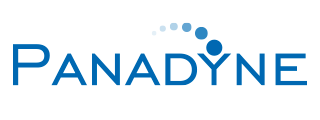Superplastic forming (SPF) is an advanced shaping technique used to fabricate complex, near-net-shape components with isotropic mechanical properties and excellent surface finish. The term “superplastic” refers to the ability of certain crystalline materials to undergo extreme deformation under specific conditions. At the correct temperature, often close to the melting point of the material, and strain rate, it can stretch well past its typical breaking point and up to 200-1000% of its original size. A critical factor in this is the tendency for materials in their superplastic state to resist necking, a type of localized thinning that can lead to tensile failure. Gas pressure is the preferred method to apply even stress across the part and further assist in uniform deformation.
Various titanium, aluminum, and nickel-based alloys, as well as some stainless steels, exhibit superplasticity and are prime candidates for SPF processes. Many aluminum alloys, for example, will deform superplastically across a temperature range of 470–520°C (878–968°F) and a broad pressure range of approximately 350—1500 kPa. This enables aluminum sheets to be heated and stretched into close contact with complex die shapes to develop near-net end products as varied as electronics casings, automotive body panels, vehicle and transit fixtures, and more.
Advances in process technology have allowed for faster throughput, making it a more cost competitive method for high volume applications like automotive parts. These processes are called Quick Plastic Forming (QPF) or High-Speed Blow Forming (HSBF) and are both based on the principles of superplastic forming.
Challenges of Superplastic Forming
One of the difficulties of superplastic forming is the potential for contact friction between the intermediate material and the mold, which can impart undesirable surface defects. When heated to a superplastic state and subjected to compressive forces, aluminum is particularly susceptible to a wearing phenomenon known as galling.
Galling is a form of localized roughness that is caused by both adhesion and friction. When superplastic aluminum comes into contact with a mold under pressurized conditions, the two surfaces may adhere to one another. This can cause localized variations in flow as the metal is stretched. Material deposition onto the mold and a scratched or gouged finished product are symptomatic of galling.
A solution to this issue is to utilize high-temperature lubrication capable of limiting intermetal friction during superplastic forming.
Boron Nitride Lubrication and Mould Release for Superplastic Forming
Boron nitride (BN) is an outstanding refractory material with excellent lubricity, non-abrading characteristics, and a high thermal conductivity on the range of 30 – 300 W/mK. This unique combination of properties makes it an ideal lubricant and releasing agent for high-temperature metal forming applications.
BN coatings have successfully been applied to panels and molds for atmospheric superplastic forming processes at temperatures up to 800°C (1472°F). This far exceeds the elongation temperature of aluminum to effectively reduce the risk of galling and preserve a high-quality surface finish throughout superplastic forming.
Superplastic Forming Solutions from Saint-Gobain Boron Nitride
Saint-Gobain Boron Nitride is one of the world’s leading suppliers of products and intermediates based on BN powders. Saint-Gobain’s CeraGlide® Boron Nitride Coatings are a proprietary solution to common wearing and friction phenomena impacting the surface finish and thickness of components manufactured through superplastic forming technologies. It is non-oxidative in temperatures up to 850°C (1562°C) and boasts exceptional lubricity to facilitate easy removal of solidified metals with improved yields.
If you would like more information about Saint-Gobain’s solutions for superplastic forming applications, please do not hesitate to contact us directly.
source: Saint-Gobain
